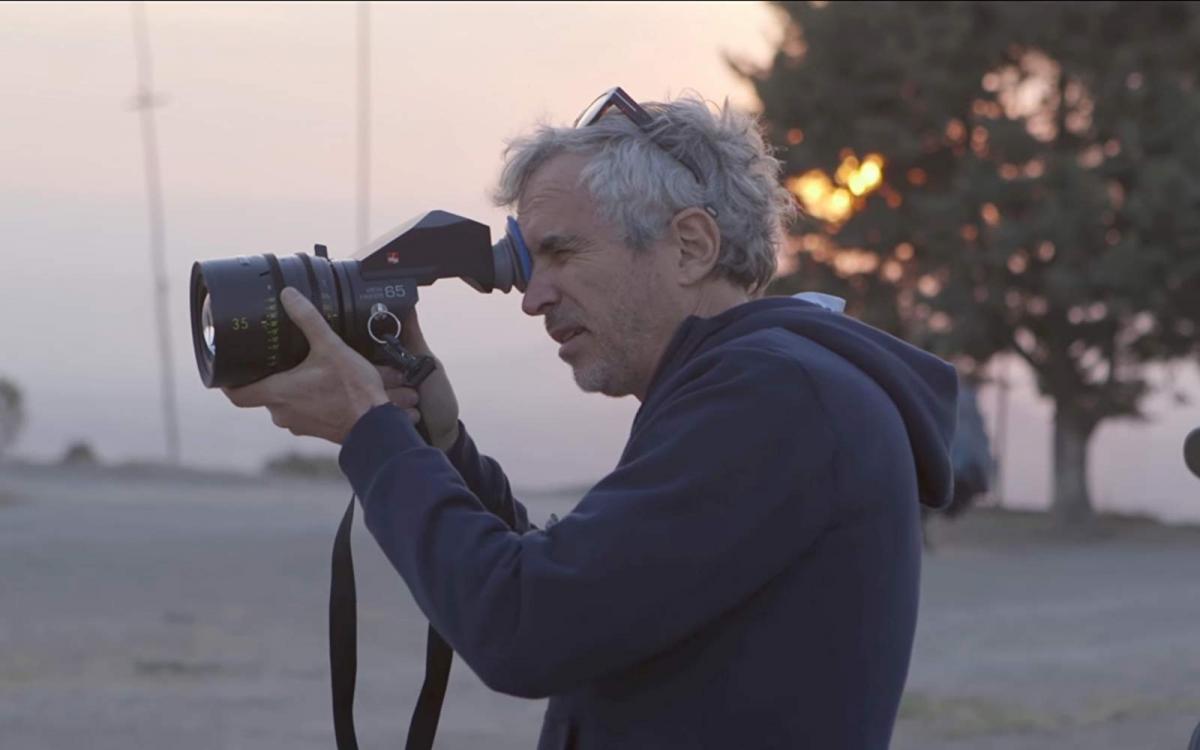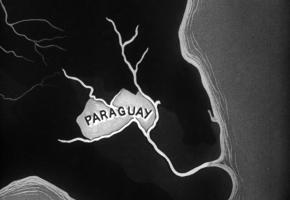Now Alfonso Cuarón has broken records, winning not only 'Best Film', but also 'Best Foreign Film', 'Best Director' as well as 'Best Cinematographer' quite a feat, seeing as he shot the film himself.
Having studied Philosophy as well as Film Craft, Cuarón has continued to create marvels in his illustrious career. He was the first Mexican to receive the Best Director Award at the Baftas and the Oscars and has played an integral role in the ‘Nuevo Cine Mexicano’ (Mexican New Wave Cinema) that emerged from Mexico in the 90s and the 2000s.
Some of the notable films of this movement include ‘The Crime of Padre Amaro’ (2002), directed by Carlos Carrera and ‘Amores Perros’, written by Guillermo Arriaga and directed by Pedro González Iñarritu. The multi-award-winning Guillermo del Toro (Pan’s Labyrinth’ 2006 and ‘The Shape of Water’ 2017) also emerged from the same stable.

Cuarón initially hit the international screens with his inventive coming-of-age road movie ‘Y TU MAMA TAMBIEN’ with Gaël García Bernal, Diego Luna and Maribel Verdú. Cuarón had, as he describes, answered the ‘…siren’s call of Hollywood’ and became somewhat stuck in filming adaptations (Great Expectations and A Little Princess) thus moving away from his own roots. He then created the stunning films ‘Gravity’(2013) with Sandra Bullock and George Clooney as well as the memorable thriller ‘Children of Men’ (2006). Yet, after this string of Hollywood successes, Cuaron has come home again.
It is rare today to have a genuine auteur film, but ‘ROMA’, written, directed, co-produced, photographed and co-edited by Alfonso Cuarón, is one such ‘achingly beautiful’ example. Shot in exquisite black & white, it follows the lives of a family and their Mixteca maids Adela, the cook, (Nancy García) and the housemaid and nanny Cleo (the superb Yalitza Aparicio) over a year of dramatic events. All the characters are, each in their own way, experiencing traumatic changes on an intimate level, whilst around them on the streets of Mexico City the social inequalities are expressed in the unrest and riots that are unfolding around them. The memory of the devastating 1968 Tlatelolco massacre of students and civilians still haunting the demonstrators in the streets.
In contrast, the relative peace in the middle-class home of the family is, nevertheless, also profoundly disturbed, as the master of the house becomes ever more absent, on his ever-extended ‘business trips’. When he finally leaves altogether, the traumatised family is held together by the resilience and stoic strength of Cleo. She, in turn, is suffering a painful trauma of her own, having also been rejected by her lover when he discovered that she had become pregnant.
Sitting before me in a recent Q&A in London, Cuarón revealed that ROMA was created to honour his original nanny, who was called ‘Libo’:
“I wanted the actors to physically look as much like the real people as possible. Not only to look like them, but to have the same qualities…Everything was on the shoulders of Cleo. She carries the film – and the real- life Libo, well… she is one of the human beings I love most in my life.”
There is such a delicate intimacy and love in the way this film is shot, that at times we feel that we are intruding into their lives. When Sofia (Marina de Tavira), the matriarch of the family, is shattered by the sudden departure of her doctor husband Antonio (Fernando Grediaga), it is Cleo, who has been almost invisible, taken for granted and certainly seldom appreciated, who steps in to help pick up the pieces. This is a large family, composed of four siblings, a dog with a penchant for fouling the garage entrance, the mother Sofia and Teresa, Sofia’s mother, a somewhat distracted character, convincingly played by Verónica García. They live with the two maids, Cleo and Adela, in their home in the Colonia Roma district of Mexico City, after which the film is named.
 Yalitza Aparicio
Yalitza Aparicio
The casting of this key character ‘Cleo’ was a huge task for Cuarón. When he had almost lost hope, it was pure chance, as so often happens, that Yalitza Aparicio turned up for an audition. She was about to qualify as a teacher when her sister convinced her to go to an audition in their village, in the state of Oaxaca. Aparicio was very concerned, as human trafficking is rife in Mexico and she thought the audition could be an elaborate process to obscure the real reasons for the gathering. Noticing her worries, it was then that Cuarón decided to recruit her best friend Nancy Garcia to play her mate and work colleague to allay her fears. This was a fortuitous decision as the fact that they were already good friends, greatly added to the ease of their relationship on screen.
Casting Sofia was equally important, as the two women are the axis around which the film moves: “it is a film about life itself”. He made a point of introducing them to each other early on, to make sure that the chemistry was right.
To add to the authenticity, the sets were meticulously re-constructed to be true to his original childhood home, down to the furniture and even the tiles that had been in their bathroom. He also made a point of not giving the actors the complete script, so they had to use their instincts to perform as ‘in the moment’, dealing with the situations as they arose, just as life reveals itself in reality. This was hard for Mariana de Tavira, who, being a professional actress, was accustomed to analysing her role in advance. This immediacy however, lends a freshness and a very special dynamic to the film that makes it feel honest and totally believable. It is totally enthralling on every level, as Cuarón says:
“She [Sofía] is the mother and [as a mother] she’s trying to control a situation that is out of control”.
As a screenwriter and director, Cuarón is very aware of the rhythmic structure of each scene, and believes it has to have a beat.
“Cinema is a language in its own right, it requires tools like sound, performance and narrative, but the screenplay is the fundamental tool… [it’s] very different to writing literary material that is designed for reading, as opposed to the screen, [ it’s a medium] where the narrative is constrained by time. In a novel, you can get lost and immersed in a world, but it is not bound by time. A sense of time is about the NOW. WE are also lost and immersed in that new universe, but at the same time, we can only breathe it for as long as it lasts. So, the time element is vital in the process of screenwriting… cinema does not owe anything to literature or painting, it is far closer to music because it is also an art that flows in time… that is also abstract, and flows with themes.”
Cuarón admires people like Tarantino, for being a master and a writer with ‘rhythm’ in his dialogues. He also searches for this, not only in the dialogue but also within the individual characters, and sometimes unexpected things happen. In the case of Y TU MAMA TAMBIEN, the two Cuarón brothers were interested in exploring the social class of the characters and the social context that informed them, and often, there is an element of improvisation: -
“It’s not about changing the nature of the scene, it’s about making it [come] alive. You know one thing is I recognise [when] I’m writing, [that] I have my concept but then I’m going to be dealing with humans that have their own ways of moving… My approach is different; it’s about trying to find the rhythm of the character. In ‘Y TU MAMA TAMBIEN’, very often what happened is that Carlos and I, we’re [a bit] older than Gaël and Diego …and they were always making fun, of our [old-fashioned] slang in the dialogue… so they would update it to their own slang… and it was fantastic. They aren’t so happy now, because [even] younger people are making fun of their slang!”
ROMA is a film that deals with death, re-birth, re-incarnation and grief as well. These themes were also explored in GRAVITY and CHILDREN OF MEN. In ROMA it was expressed through the stillbirth, and the grief of that loss and the pain of the breakdown of the marriage. Interestingly, Cuarón insists that many of these themes were instinctual, he was not really aware of them. It was not until someone pointed it out, for instance, that he realized his films all ended up in the water! The beach scene at the end of ROMA is a long, masterly and fluid shot and in one take, sweeps down from the trees across the large beach, following the characters right into the sea. This smooth and continuous take in one long breath gathers tremendous power and holds the spectator captive throughout, especially as it is a particularly dramatic scene.
Cuarón has been surprised that people talk about his films forming a ‘trilogy’. This was not a planned outcome. He gives a huge importance to the process and the working and structure of the screenplays, the more thought- out they are, the freer he feels when he is directing. Yet ROMA does not fit the bill in quite the same way.
When the idea first came to him, in a sense, it had three pillars: -
“One is that it was about this character Cleo, based upon one person, the woman who raised me. I’m part of her family, that’s the process, another tool was going to be memory...and that it was going to be [shot] in black and white. Those were the only three things and so the process had to be memory … all the research that you surely do in books and talking with experts, [here] it was just like getting lost in memories. The thing with memories is that it’s like this corridor with … an infinite number of doors, so that whichever door that you open leads you to another infinite corridor with another infinite number of doors, and you keep on going from door to door and you get lost … It was …more interesting when I started balancing those memories with the real-life Cleo, and then learning about her memories. It was a whole process like that and when I felt that I had reached that point, I sat down to write. I wrote the whole thing… and this is the thing… I’ve never written a script in more than three weeks. I believe that a screenplay, [either] you write it in three weeks or thirty years.”

ROMA was written in one draft, in the hope that he had developed enough ‘narrative’ muscle over the years that would help the structure, as he did not pre-plan any of it… as if it were all written in automatic writing or a stream of consciousness. It definitely paid off. This fluidity is evident in the seamless flow of the narrative and how the characters develop. Cuarón protected the script from ‘wise’ comments from his usual collaborators like Alejandro Gonzalez Iñarritu, Guillermo del Toro or his brother Carlos by not letting them read it: -
“I didn’t want [to]… because I knew that they would give me amazing suggestions that would make me kind of side-tracked and I didn’t want… I just wanted to preserve the purity of those memories and the way they were.”
ROMA is a magical film that should be seen on a big screen. This has not been lost on the distributors Netflix, who arranged for a limited theatrical release in Los Angeles, New York and Mexico from November 21st, and from the end of November, this will be expanded to included other large US cities and London.
ROMA was also released on Netflix on December 14th 2018.

















